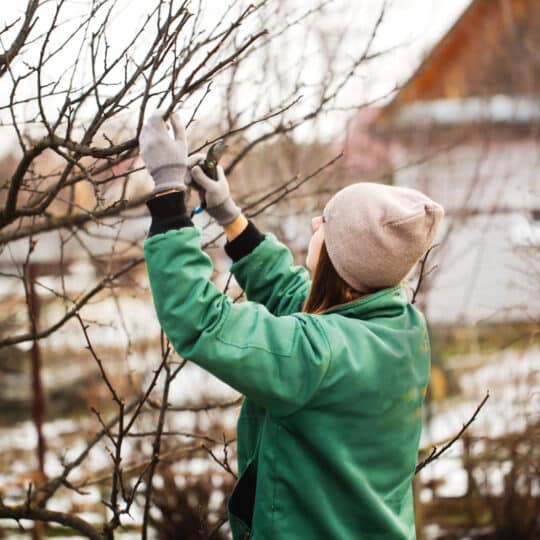Winter Tree & Shrub Pruning
What to Cut Now & Later
Posted
February 16, 2023

It’s one day closer to spring…have you started pruning yet? While winter is the best time to prune some plants, others should be left alone for now. Take these winter tree and shrub pruning tips with you to the garden in the next few weeks. Spring will be blooming before you know it, and with the right care it could be quite a show.
Timing is Everything
Since many plants go dormant in the winter, it’s a great time to get them in shape for waking up in spring. Deciduous trees make it easier to prune without any leaves. Perennial flowers have long since withered in the winter weather. But what about those that are already showing some signs of life?
Many trees and shrubs that flower in the spring have already started growing buds. Any pruning of these plants runs the risk of limiting their beautiful blooms. This is why it’s important to know what kinds of plants you have and when is the best time to prune them.
Timing depends on several factors: plant growth, when they flower, and current condition. Typically plants that stop growing in the winter have an easier time recovering from major pruning. This means cutting back overgrown plants and reshaping them. Plants that flower in the spring should be pruned once their blooms fade. However, if a plant is currently full of broken, dead, or diseased branches, it’s good to get rid of those whether they have buds or not.
Winter Tree & Shrub Pruning
So what should be pruned now?
- Summer-bloom shrubs. Pruning in late winter until early spring still gives enough time for buds to grow.
- Evergreen trees and shrubs. Since these don’t flower there’s no risk of cutting off blooms. Remove the lowest branches for better circulation and access to the soil.
- Oak trees. Don’t wait too long to trim these since there’s a sap-loving beetle that will wake in March and could spread disease.
Whatever is pruned now can start putting energy into producing new growth in the spring.
Tree Pruning Tips
Now that you know what to cut, the next thing to consider is how to cut.
- Any short trees, shrubs, or plants you can reach from the ground can be pruned with a variety of hand tools. There are short pruners for thin branches, long-blade pruners for shaping, and long-handled pruners for hard-to-reach areas.
- While the type of tool you use depends on the project, you always want to make sure the blades are clean and sharp.
- If you can’t reach the branch because the tree is too tall, call a professional.
- If there are too many broken, diseased, or overgrown branches, have an arborist consult on the best way to prune and reshape the tree for healthier growth.
- Pick a mild, dry day to prune. You don’t want to shock the tree with a temperature change or open it up to waterborne disease. Nice weather is also more pleasant for you.
- Cut branches at an angle at the point where it attaches to another. This helps it heal faster and prevent disease.
For more information on the best way to prune your specific trees and shrubs, contact Cardinal Lawns for an evaluation. Spring will be here soon, and with it comes a lot more yard work. Getting the right start now can make it easier on you and your plants.

Download Your FREE Summer Plant Care Guide
Help your plants make it through a hot & dry summer looking like a million bucks with our summer plant watering and maintenance guide!